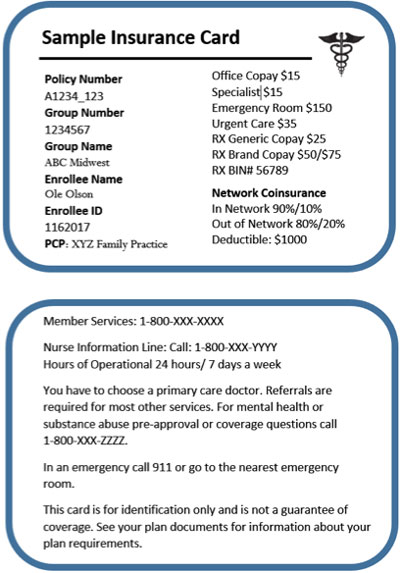Health Insurance Terms

Health insurance is insurance that covers all or part of a covered individual’s medical and surgical expenses. The insurer will pay for an agreed upon amount of provider services, medications, hospital care, and special equipment, depending on the health insurance plan selected. Individuals may still have to pay a co-pay or a percentage of the cost of care, called coinsurance (see below). Health insurance also covers common preventive health services such as immunizations that help people stay healthy. Becoming familiar with several key health insurance terms will help youth and their families make informed decisions when deciding what health care plan best meets their needs.
Co-insurance is the insured person’s share of the costs of a covered health care service. It is often calculated as a percent (for example, 20%) of the allowed amount for the service. You pay co-insurance plus any deductibles you owe.
Co-payment or copay is the amount an individual is required to pay for a covered service (for example, $30). It is usually paid at the time you receive the service.
Deductible is the amount you must pay for health care services before your health insurance or plan begins to pay. For example, if your deductible is $1,000, your insurance provider won’t pay anything until you’ve met your $1,000 deductible (except for preventive care).
Premium is the amount an individual must pay to the insurance provider for health insurance coverage. It is not included in the deductible, copayments, or co-insurance. Employers and/or families usually pay it monthly, quarterly, or yearly.
Network is the facilities, providers, and suppliers your health insurer has contracted with to provide health care services. Contact your insurance company to find out which providers are part of their network, or “in-network.” If a provider is “out-of-network,” it might cost you more to see them.
Source: Transition Quick Guide: Take Charge of Planning and Managing Your Own Health and Career Goals, a document created through an Alliance with the Youth Transitions Collaborative, Got Transition/Center for Health Care Transition Improvement, and the U.S. Department of Labor’s Office of Disability Employment Policy.

